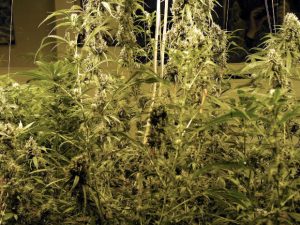Cannabis Attorneys: How Outlawing Marijuana Made it More Dangerous
Long-time California cannabis attorneys advocating for cultivation, production, sales and possession have long been fighting fear-mongering and stigma where the plant is concerned. Still, one of the oldest – and frankly more compelling – arguments against legalizing the drug is that marijuana has innate chemical properties that induce a powerful psychosis. Of course, for most people, that effect wears off quickly. However, for certain persons with genetically predisposed conditions, there could be a higher risk of acute, long-term psychosis.
Furthermore, frequent use of more potent pot strains heightens the danger for these individuals.
Sounds scary, right? Certainly, it’s something that businesses in the marijuana trade would want to be aware, as it creates the potential for a civil product liability lawsuit. With popular support of legal cannabis only swelling, it’s not clear a small percentage risk will make a huge dent in sales, but given the gravity of the alleged condition, it’s worth exploring. But before anyone gets too paranoid, marijuana attorneys in L.A. urge a bit closer look. What you don’t see at first glance is:
No. 1. It was marijuana prohibition that pushed the plant to contain higher concentrations of Tetrahydrocannabidinol (THC), the chemical that gets you high.
No. 2. The regulation of marijuana, which includes caps on potency and lowers the risk of criminal penalties for selling or possessing larger quantities means it should not (and does not need to be) so potent. Newer strains sold in dispensaries might be slightly “weaker” than what you’re used to on the street, but they also tend to contain more of the second major chemical, Cannabidiol (CBD), which counteracts psychosis AND has all sorts of medicinal properties.
Let’s rewind back to the turn of the 20th Century, which is the time at which cities in America first began enacting bans on the drug (El Paso was No. 1 in 1914). A few years later, the Drug Enforcement Agency was born, in charge of enforcing alcohol prohibition. We know how that ended, but the head of the DEA didn’t want to simply shutter the agency. He started lobbying for prohibition on marijuana, ultimately with success in 1937 with the Marijuana Stamp Act, which outlawed all uses except scientific. (The arguments against use were rooted in racism and misogyny and misunderstandings about those from different cultures.)
Three years later, researchers discovered the CBD element in weed and didn’t think it had any active pharmacological benefit at all. Years later, we know it actually service to help treat anxiety, psychosis and addiction. It also offsets the psychosis of THC.
But because the drug was illegal and federal and state laws set penalties by the gram (not the potency), growers, buyers and users alike had an interest in making higher potency plants. These smaller buds could be sold for top dollar, and they were easier to transport and would result in (hopefully) a lower-level drug crime if you were caught. It only got worse as demand rose.
The National Institute on Health reports black market marijuana in 1995 tested for an average THC potency of about 4 percent. Fast-forward 20 years to 2014, and the average THC potency had tripled to 12 percent.
But that’s where Los Angeles cannabis lawyers see that legalization comes in: The amount of THC in a given product can be capped and monitored through a reliable testing process.
California regulation on marijuana edibles require that doses be marked in 10-milligram increments of THC and capped at 100 milligrams of THC per package.
The Los Angeles CANNABIS LAW Group represents growers, dispensaries, collectives, patients and those facing marijuana charges. Call us at 949-375-4734.
Additional Resources:
How Cannabis Prohibition Has Made Marijuana More Dangerous, Oct. 22, 2018, By Jordan Waldrep, Forbes
More Blog Entries:
AP: California Cannabis Safety Testing Rate Poor, Oct. 12, 2018, California Cannabis Attorney Blog
 Cannabis Law Group's Medical Marijuana Legal Blog
Cannabis Law Group's Medical Marijuana Legal Blog




